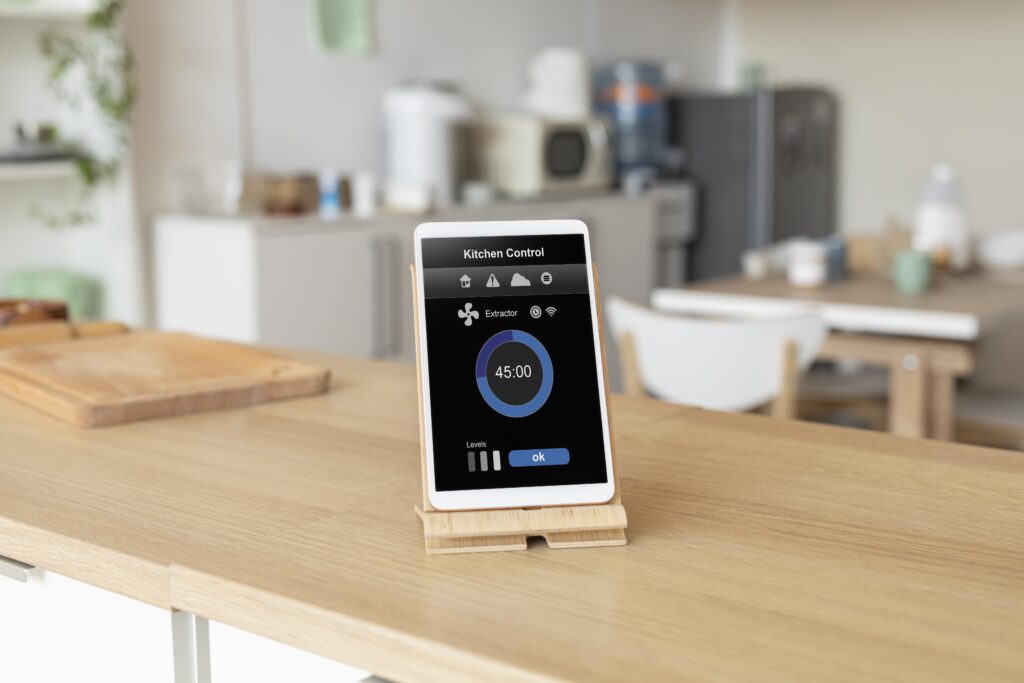Stay Connected: Designing a Functional Kitchen Charging Station

In today’s dynamic digital landscape, our reliance on electronic devices has transformed how we interact, work, and entertain ourselves.
With smartphones, tablets, and other gadgets becoming indispensable tools in our daily lives, the necessity for accessible charging solutions has skyrocketed.
Enter the concept of a functional kitchen charging station. In this comprehensive guide, we delve into the significance of such a station in contemporary households and provide detailed insights on how to design one effectively.
Understanding the Need
In today’s digital era, the proliferation of electronic devices has created a pressing need for accessible charging solutions.
With gadgets like smartphones and smartwatches becoming ubiquitous, households seek convenient ways to keep them powered.
Additionally, as the kitchen remains the hub of family activity, integrating a charging station into this space enhances connectivity and seamlessly integrates technology into daily life.
1. Rise of Electronic Devices
The explosion of electronic gadgets within households has led to an unprecedented demand for convenient charging options.
From smartphones to smartwatches, the sheer volume of devices requiring regular charging has surged.
2. Kitchen as a Hub
Traditionally known as the heart of the home, the kitchen serves as a focal point for family gatherings, culinary endeavors, and social interactions.
Embedding a charging station in this central space ensures that devices remain powered up, seamlessly integrating technology into daily routines.
Key Considerations
1. Accessibility: The success of a kitchen charging station by Kew Labs hinges on its accessibility to all household members. Optimal placement in a central location ensures easy reach from various points within the kitchen.
2. Safety: Safety is paramount, particularly in a kitchen environment where water and heat are omnipresent. Installing the charging station in a location that mitigates the risk of water exposure and overheating is imperative.
3. Aesthetics: While functionality is pivotal, the visual appeal of the charging station shouldn’t be disregarded. Selecting a design that harmonizes with the existing kitchen decor—be it contemporary or traditional—enhances the overall ambiance.
Designing the Station
- Integrated Power Outlets: Seamlessly incorporate power outlets into kitchen cabinetry or countertops to facilitate charging without cluttering the space with unsightly cords.
- Wire Management: Implement effective wire management solutions to organize cables and minimize tripping hazards. Concealed cable channels or hidden compartments keep cords out of sight.
- Multi-Device Compatibility: Opt for a charging station accommodating various devices, from smartphones to kitchen appliances like electric knives, ensuring versatility and usability.
- Adjustable Shelves or Drawers: Flexibility is key; incorporate adjustable shelves or drawers to accommodate devices of diverse shapes and sizes, catering to individual needs.
- Built-in Docking Stations: Streamline the charging process by installing built-in docking stations for specific devices, reducing countertop clutter and eliminating the need for separate cables.
- Task Lighting: Enhance visibility and facilitate nighttime charging by incorporating task lighting above or around the charging station.
Maximizing Functionality
- Additional Features: Explore supplementary features such as USB ports, wireless charging pads, or smart technology integration to augment the station’s functionality.
- Incorporate Storage: Integrate storage solutions to keep devices, accessories, and cables organized when not in use, promoting a tidy and efficient workspace.
- User-Friendly Interface: Simplify usage for users of all ages and technical proficiencies by labeling ports or providing clear instructions.
- Remote Access: Consider incorporating remote access capabilities, enabling users to monitor and control charging status remotely via smartphones or other devices.
Maintenance and Upkeep
- Regular Inspection: Schedule routine inspections to identify signs of wear, damage, or malfunction, addressing issues promptly to mitigate potential safety hazards.
- Cleaning: Keep the charging station free of debris and dust by regularly wiping down surfaces with a soft, dry cloth, maintaining optimal functionality and aesthetics.
- Update Technology: Stay abreast of technological advancements and update the charging station as needed to ensure compatibility with new devices and standards.
Integration with Smart Home Technology

Incorporating smart home technology into the kitchen charging station elevates its functionality to new heights.
By seamlessly connecting with existing smart systems, users can effortlessly manage charging schedules and control devices remotely.
Additionally, compatibility with smart appliances enhances convenience and streamlines daily tasks, fostering a cohesive and efficient home ecosystem.
1. Seamless Connectivity
Consider integrating the kitchen charging station with existing smart home systems. This enables users to manage charging schedules, receive notifications, and even control devices remotely through voice commands or smartphone apps.
2. Compatibility with Smart Appliances
Explore compatibility with smart kitchen appliances to create a cohesive ecosystem. Syncing the charging station with appliances like refrigerators or coffee makers enhances convenience and efficiency in daily tasks.
Environmental Sustainability
Embracing environmental sustainability transforms the kitchen charging station into a beacon of eco-conscious living.
By prioritizing energy-efficient design and the use of sustainable materials, households can minimize their carbon footprint while enhancing functionality.
From automatic power management to eco-friendly construction, these practices align with a greener lifestyle and promote responsible consumption.
1. Energy-Efficient Design
Opt for energy-efficient components and technologies to minimize electricity consumption. Incorporating features such as automatic power shutoff or energy monitoring capabilities promotes eco-friendly practices.
2. Use of Sustainable Materials
Choose sustainable materials for the construction of the charging station, reducing environmental impact.
Recycled plastics, bamboo, or reclaimed wood are viable options that align with eco-conscious values.
Conclusion
In summary, a functional charging station serves as a cornerstone in modern homes, offering a convenient and accessible solution for keeping electronic devices powered and ready for use.
By comprehending the need for such a station, meticulously considering key design elements, maximizing functionality, and adhering to proper maintenance practices, homeowners can create a space that fosters connectivity while enhancing the overall functionality and visual appeal of their kitchen.
Embrace the synergy of technology and design with a well-crafted charging station, and revel in the seamless integration of connectivity into daily life.



